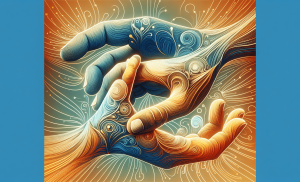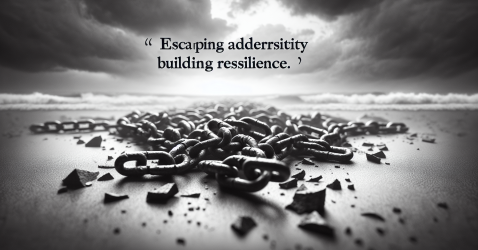Zen And The Art Of Motorcycle Maintenance: Self-Care For Bikers
In this enlightening article, embark on a journey through the pages of “Zen and the Art of Motorcycle Maintenance” as it uncovers the profound connection between self-care and the world of biking. Discover the transformative power of finding inner peace and balance on the open road, as the author delves into the philosophical depths of maintaining both your motorcycle and your well-being. Get ready to explore the intriguing intersection of Zen philosophy and the exhilarating world of biking, all with the aim of helping you find your own path to fulfilling self-care. Join us as we embark on this captivating exploration together.
Choosing the Right Motorcycle
Considerations for Bike Type
When it comes to choosing the right motorcycle, one of the first things to consider is the type of bike that best suits your needs and preferences. There are various types of motorcycles available, each designed for specific purposes. Some common types include sport bikes, cruisers, dual-sport bikes, and touring bikes. Sport bikes are known for their agility and speed, while cruisers offer a laid-back and comfortable riding experience. Dual-sport bikes are versatile and can handle both on-road and off-road terrains, while touring bikes are designed for long-distance rides with ample storage capacity.
To narrow down your options, think about the kind of riding you intend to do. Are you planning to use your motorcycle primarily for commuting, leisurely rides, or long-distance trips? Consider your riding style and preferences as well. Do you enjoy the thrill of speed and maneuverability or prefer a more relaxed and comfortable ride? Answering these questions will guide you in choosing the right type of motorcycle for your needs.
Evaluating Power and Performance
Another important factor to consider when choosing a motorcycle is power and performance. The engine size and horsepower of a bike determine its speed and acceleration capabilities. If you’re looking for a speedy ride and enjoy the thrill of high-performance bikes, you may opt for a motorcycle with a larger engine size and higher horsepower. On the other hand, if you’re a beginner or prefer a more manageable and fuel-efficient ride, a bike with a smaller engine size may be a better choice.
It’s also important to consider the weight of the motorcycle. Heavier bikes may provide stability on the road but can be less maneuverable, especially for riders with less experience. Lighter bikes, on the other hand, are more agile and easier to handle. Ultimately, it’s essential to find a balance between power, performance, and your comfort level as a rider.
Ergonomics and Comfort
Ensuring your comfort while riding is crucial for an enjoyable and safe experience. Pay attention to the ergonomics of the motorcycle, including factors such as the seat height, handlebar position, and foot peg placement. A comfortable riding posture helps prevent fatigue and discomfort during long rides. Consider visiting a motorcycle dealership to sit on different bikes and get a feel for their ergonomics.
Additionally, think about the overall design and build quality of the motorcycle. Look for features that enhance comfort, such as adjustable suspension, wind protection, and integrated storage options. Remember, you’ll be spending hours on your motorcycle, so investing in a bike that prioritizes your comfort will go a long way in enhancing your riding experience.
Maintaining Your Motorcycle
Regular Oil Changes
Proper maintenance is essential for the longevity and optimal performance of your motorcycle. One of the most crucial maintenance tasks is regular oil changes. Engine oil lubricates the engine components, reducing friction and preventing damage. Over time, oil loses its effectiveness and becomes contaminated with debris, leading to reduced engine performance and potential long-term damage.
Consult your motorcycle’s owner manual for the recommended oil change intervals. Typically, oil changes are needed every 3,000 to 5,000 miles or at least once a year. Make sure to use the right type and grade of oil specified by the manufacturer. Regularly checking the oil level and color is also important. If you notice low oil levels or a dark and dirty appearance, it’s time for an oil change.
Inspecting Tires and Brakes
Maintaining good tire and brake condition is crucial for safe and reliable riding. Regularly inspect your tires, checking for any signs of wear, damage, or tire pressure fluctuations. Worn-out or improperly inflated tires can affect your motorcycle’s handling and stability, increasing the risk of accidents. Ensure that the tire treads are not excessively worn and that there are no cracks or bulges on the sidewalls.
Equally important is checking and maintaining your motorcycle’s brakes. Inspect the brake pads or shoes for wear and replace them when necessary. Check the brake fluid level and ensure there are no leaks or air bubbles in the system. Properly functioning brakes are vital for your safety and the safety of others on the road, so prioritize regular inspections and maintenance.
Cleaning and Lubrication
A clean and well-lubricated motorcycle not only looks great but also performs better. Regular cleaning helps combat the corrosive effects of dirt, dust, and road grime, preventing damage to your motorcycle’s paint, chrome, and metal components. Use mild soap and water to wash your bike, avoiding harsh chemicals that can cause discoloration or damage.
After cleaning, it’s important to lubricate moving parts such as the chain, throttle, and brake cables. Using the appropriate lubricants recommended by the manufacturer ensures smooth operation and extends the lifespan of these components. Regularly lubricating your motorcycle’s chain is particularly important, as a dry or improperly lubricated chain can lead to poor performance and even chain failure.
Riding Gear and Safety
Importance of Protective Clothing
Wearing the right riding gear is essential for your safety and protection while on the road. Invest in quality gear that is designed specifically for motorcycle riding. This includes a motorcycle-specific jacket, pants, gloves, and boots. These items are designed with abrasion-resistant materials and built-in armor to protect you in the event of a fall or accident. Additionally, wearing gear with bright or reflective elements improves your visibility to other motorists, reducing the risk of collisions.
Selecting a Certified Helmet
Choosing the right helmet is perhaps the most crucial aspect of your riding gear. A helmet is your primary protection against head injuries, and wearing one is not only a good practice but often a legal requirement. Look for helmets that are certified by regulatory organizations such as the Department of Transportation (DOT) or the Snell Memorial Foundation. These certifications ensure that the helmet meets safety standards and provides adequate protection.
When selecting a helmet, make sure it fits snugly and comfortably on your head. It should not be too loose or too tight. Try on different helmets to find the one that suits the shape and size of your head the best. Remember, a helmet protects your brain, so investing in a high-quality and well-fitting helmet is a must for every rider.
Reflective Gear and Visibility
Visibility is crucial for both day and night riding. Wearing reflective gear, such as reflective vests or jackets, increases your visibility to other motorists, especially in low-light conditions. Retro-reflective materials on your gear reflect light back to its source, making you more visible from a distance.
In addition to wearing reflective gear, ensure that your motorcycle has proper lighting. Check that all the lights, including the headlights, taillights, and turn signals, are in working order. Regularly clean the lenses to remove dirt or grime that can dim the lights. Good visibility plays a vital role in preventing accidents and keeping you safe on the road.
Physical Fitness for Bikers
Strengthening Core Muscles
Being physically fit and having strong core muscles is beneficial for motorcycle riders. Strong core muscles help support your posture while riding, reducing the strain on your back and improving your overall balance and stability. Core exercises, such as planks, crunches, and yoga poses that target the abdominal and lower back muscles, can help strengthen your core.
Flexibility and Stretching Routines
Flexibility is also important for riders, as it allows for better control and maneuverability on the bike. Incorporate stretching routines into your daily routine to improve flexibility. Focus on stretches that target the neck, shoulders, wrists, and hips, as these areas tend to be under constant strain while riding.
Regular stretching helps prevent muscle tightness and reduces the risk of cramps or discomfort during long rides. Prioritize dynamic stretching before riding to warm up the muscles and static stretching after riding to cool down and enhance recovery.
Cardiovascular Exercises
Cardiovascular fitness is crucial for maintaining endurance and focus on long rides. Engage in regular cardiovascular exercises such as cycling, jogging, or swimming to improve your overall fitness level. These exercises increase your heart rate, improve lung capacity, and boost your stamina. Aim for at least 30 minutes of moderate-intensity cardiovascular exercise, five days a week, to reap the benefits of improved fitness for motorcycle riding.
Mental Preparation and Focus
Meditation and Mindfulness Practices
Mental preparation and focus are key aspects of safe and enjoyable motorcycle riding. Practicing meditation and mindfulness techniques can help calm and center your mind, promoting a heightened state of awareness while on the road. Meditation involves focusing your attention on the present moment, allowing you to let go of distractions and cultivate a clear and focused mindset.
Allocate a few minutes each day to practice mindfulness meditation. Sit in a quiet and comfortable place, close your eyes, and bring your attention to your breath or a specific point of focus. As you become more skilled in mindfulness, you’ll find it easier to maintain focus and concentrate while riding.
Developing Concentration Skills
Riding a motorcycle requires concentrated attention and quick decision-making. Developing concentration skills can enhance your ability to stay focused on the road and react promptly to changing situations. One effective way to improve concentration is through mental exercises, such as puzzles, memory games, or focusing on single tasks for extended periods.
Practice concentration exercises regularly, both on and off the bike. By training your mind to stay focused, you’ll be better equipped to anticipate potential risks and navigate challenging riding conditions.
Visualization Techniques
Visualization is a powerful technique that can enhance your riding skills and overall confidence on the bike. By visualizing successful and safe rides in your mind, you create mental images that help reinforce positive riding habits and decision-making.
Before hitting the road, take a moment to visualize yourself having a safe and enjoyable ride. Picture yourself maneuvering through traffic, reacting to potential hazards, and arriving at your destination without any issues. This mental rehearsal primes your mind for success and can significantly improve your riding experience.
Nutrition and Hydration
Fueling Your Body with Healthy Foods
Proper nutrition is essential for maintaining energy levels and keeping your body performing optimally. As a motorcycle rider, you need to fuel your body with healthy and balanced meals. Include a variety of fruits, vegetables, whole grains, lean proteins, and healthy fats in your diet. These provide essential nutrients and vitamins to support your overall health and well-being.
Avoid consuming heavy meals right before a ride, as this can lead to discomfort and fatigue. Opt for lighter meals that provide sustained energy without weighing you down. Additionally, be mindful of your portion sizes and avoid excessive consumption of sugary and processed foods, as they can cause energy crashes and affect your concentration on the road.
Proper Hydration and Electrolyte Balance
Staying hydrated is crucial for overall health and is especially important when engaging in physical activities such as riding a motorcycle. Dehydration can lead to fatigue, dizziness, and impaired cognitive function, which can compromise your safety on the road.
Make it a habit to drink water regularly throughout the day, even when you’re not thirsty. The exact amount of water needed varies depending on factors such as body weight, activity level, and climate. Aim to drink at least 8 cups (64 ounces) of water per day, and increase your intake during hot or strenuous rides.
Electrolytes, such as sodium, potassium, and magnesium, are essential for maintaining proper fluid balance and muscle function. Consider replenishing electrolytes through sports drinks or electrolyte supplements, especially during longer rides or in hot weather conditions.
Supplements and Vitamins for Bikers
While a well-balanced diet should provide most of the necessary nutrients, some riders may benefit from dietary supplements or vitamins. Before beginning any supplementation, consult with a healthcare professional or nutritionist to determine your specific needs.
Motorcycle riders are exposed to various environmental factors, such as sunlight and air pollution, which can impact their vitamin levels. Consider supplementing with vitamins that support immune function, promote healthy skin, and provide antioxidant protection. Additionally, some riders may benefit from supplements that support joint health, such as glucosamine and chondroitin, to prevent joint pain or stiffness from prolonged rides.
Managing Stress and Anxiety
Recognizing Signs of Stress
Riding a motorcycle can be an exhilarating experience, but it can also be stressful at times. It’s important to recognize the signs of stress and take steps to manage it effectively. Common signs of stress include irritability, difficulty concentrating, muscle tension, and changes in appetite or sleep patterns.
Pay attention to your mental and emotional well-being. If you notice any signs of stress, take a break and engage in stress-reducing techniques to help restore your calm and focus.
Stress-Reducing Strategies
Managing stress is essential for your overall well-being and safety on the road. Various strategies can help reduce stress and promote relaxation. Engaging in activities that you enjoy, such as listening to music, practicing hobbies, or spending time in nature, can have a calming effect on your mind.
Breathing exercises can also help alleviate stress. Take slow, deep breaths, focusing on fully exhaling and inhaling. This helps activate your body’s relaxation response, reducing stress and promoting a sense of calm.
Anxiety Coping Mechanisms
Dealing with anxiety while riding can be challenging, but there are coping mechanisms that can help. First, acknowledge your anxiety and accept that it’s natural to experience some discomfort in certain situations. Practice deep breathing techniques to relax your body and mind.
Consider using positive affirmations or self-talk to counter anxious thoughts. Repeat empowering and reassuring statements to yourself, such as “I am in control” or “I am a skilled and confident rider.” Visualization techniques, such as picturing calm and successful rides, can also be beneficial in reducing anxiety.
Building a Supportive Biker Community
Joining Motorcycle Clubs and Associations
Being part of a motorcycle club or association provides numerous benefits for bikers. These groups offer opportunities to connect with like-minded riders, share experiences, and learn from one another. Joining a club or association allows you to tap into a supportive community that understands and appreciates your love for motorcycles.
Research local motorcycle clubs or associations in your area and reach out to join. Attend club meetings, events, and rides to start building connections and forging friendships within the biker community.
Participating in Group Rides and Events
Group rides and events offer unique opportunities to socialize, explore new routes, and enhance your riding skills. They provide a sense of camaraderie and foster lasting friendships. Participating in group rides also enhances safety, as riding in a group increases visibility to other motorists and provides additional support in case of emergencies.
Check for local motorcycle events, charity rides, or gatherings organized by clubs or associations. Attend these events to connect with fellow riders and immerse yourself in the vibrant motorcycle community.
Online Biker Communities
In addition to local clubs and events, online biker communities provide a platform for riders to connect and share their passion for motorcycles. These communities allow you to interact with riders from around the world, exchange tips and advice, and even plan virtual rides or meetups.
Join motorcycle forums, social media groups, and online communities dedicated to motorcycling. Engage in discussions, ask questions, and share your experiences. Online communities offer a wealth of knowledge and support, making them valuable resources for bikers.
Learning From Experienced Riders
Seeking Mentorship and Guidance
Learning from experienced riders can significantly enhance your riding skills and knowledge. Seek out mentorship and guidance from seasoned riders who can offer valuable insights and advice. Look for individuals who are willing to share their expertise and accompany you on rides to provide hands-on guidance.
Approach local motorcycle clubs or organizations and express your interest in finding a mentor. Many experienced riders are eager to pass on their knowledge and help new riders become skilled and safe on the road.
Attending Riding Skills Workshops
Attending riding skills workshops is an excellent way to further develop your riding abilities. These workshops are often conducted by professional riders or organizations and cover a wide range of topics, from basic riding techniques to advanced maneuvers. They typically include both theoretical knowledge and practical exercises, allowing you to apply what you learn in real-world riding scenarios.
Research local riding schools or organizations that offer skills workshops. Sign up for workshops that align with your skill level and specific areas you want to improve. By investing in your knowledge and skill development, you’ll become a more confident and competent rider.
Benefiting from Group Wisdom
The collective wisdom of a group can often surpass the knowledge of individuals. Engage in group discussions and conversations with fellow riders to tap into their experiences and valuable insights. Share your own experiences and seek advice on topics related to riding, maintenance, or any challenges you may be facing.
Whether it’s online forums, group rides, or local meetups, actively participate in group discussions and seek opportunities to learn from the vast pool of knowledge that exists within the biking community.
Finding Balance Between Riding and Rest
Setting Realistic Riding Goals
Finding balance between riding and rest is important for both your physical and mental well-being. Setting realistic riding goals helps ensure that you’re not pushing yourself to the point of exhaustion or burnout. Consider factors such as your available time, energy levels, and other commitments when planning your rides.
Acknowledge that there may be days or weeks when it’s not feasible to ride as much as you’d like. By setting realistic goals, you can enjoy your rides without feeling overwhelmed or pressured to constantly be on the road.
Prioritizing Rest and Recovery
Rest and recovery are crucial for maintaining optimal physical and mental performance. Make sure to prioritize adequate rest between rides. Fatigue can impair your judgment, reflexes, and overall riding skills, increasing the risk of accidents.
Listen to your body and allow yourself time to recover after long or challenging rides. Get enough sleep, practice relaxation techniques, and engage in activities that promote rest and rejuvenation. By giving yourself the time and space to rest, you’ll be ready for more enjoyable and safe rides in the long run.
Avoiding Burnout
Motorcycle riding can be addictive, but it’s important to avoid burnout. Riding excessively without allowing yourself breaks and diversions can lead to a loss of interest or passion for riding. Remember that self-care involves finding a balance between your hobbies, responsibilities, and personal well-being.
Incorporate other activities and interests into your routine to prevent burnout. Engage in hobbies, spend time with loved ones, or explore other recreational pursuits. This will help keep your love for riding alive and ensure that it remains a source of joy and relaxation rather than becoming a chore.
In conclusion, choosing the right motorcycle, maintaining it properly, prioritizing safety, focusing on physical and mental well-being, managing stress, building a supportive community, learning from experienced riders, and finding a healthy balance between riding and rest are all important components of self-care for bikers. By taking care of yourself and your motorcycle, you can ensure a safe, enjoyable, and fulfilling riding experience. Safe travels and enjoy the open road!

















